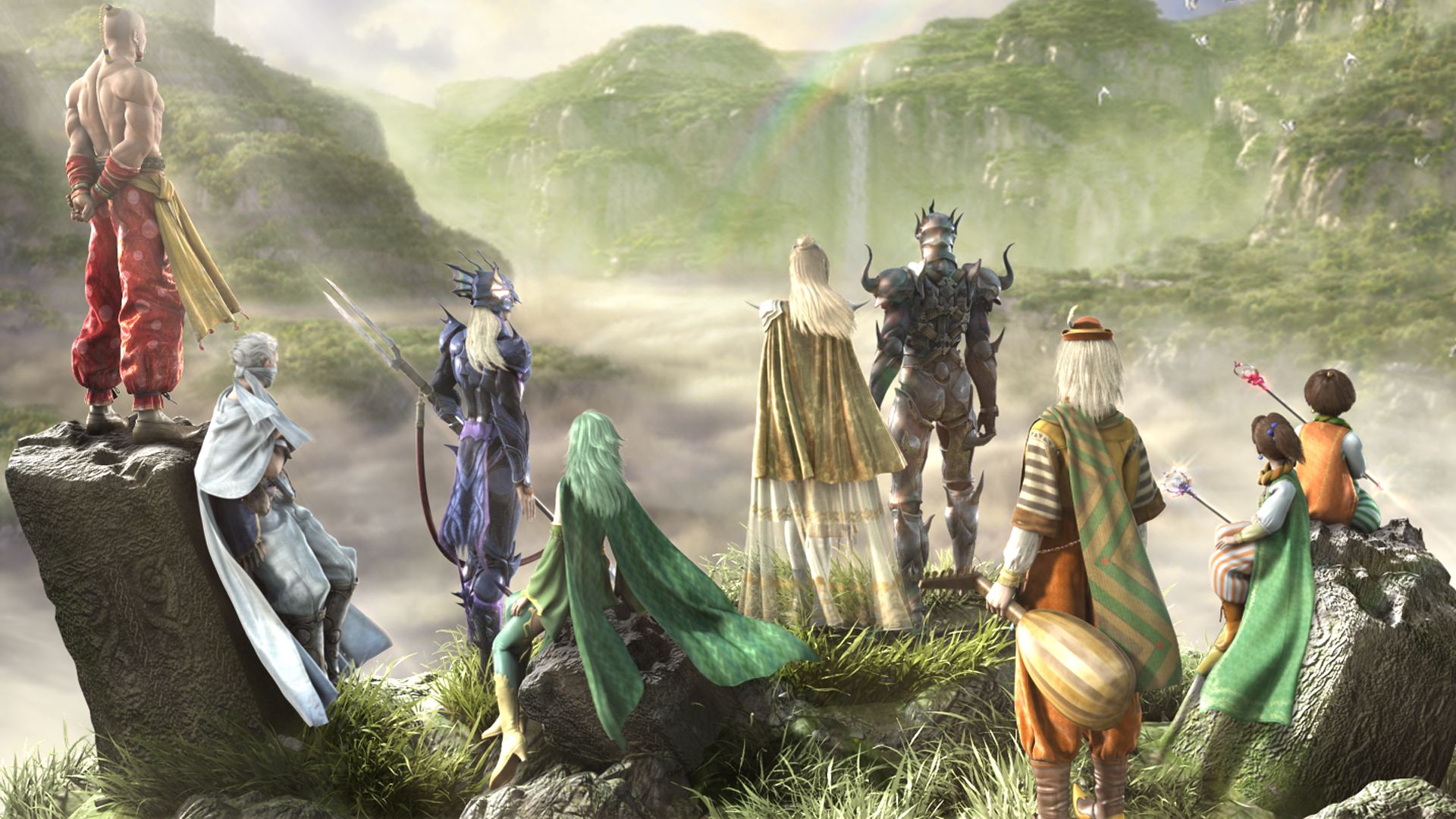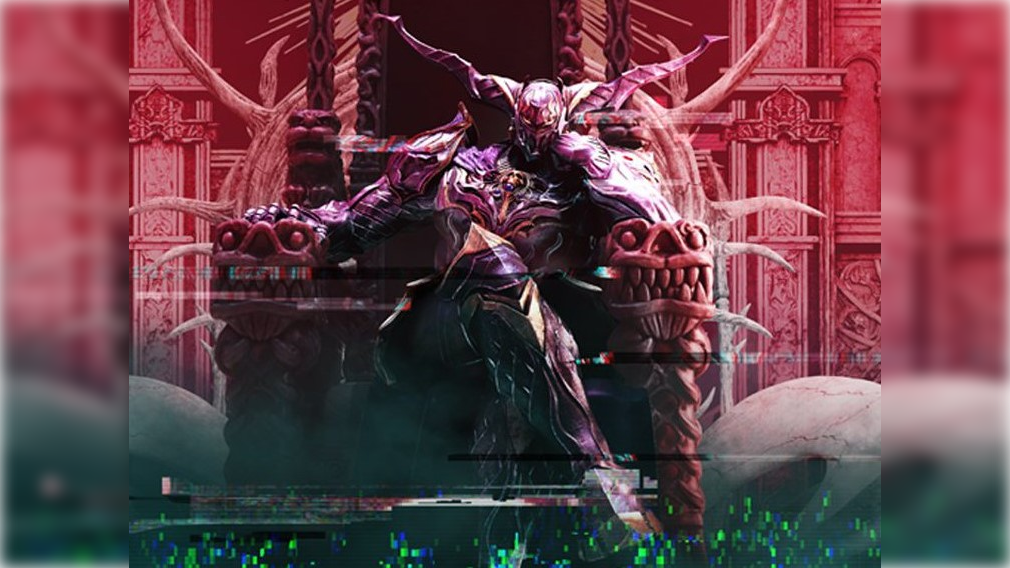Welcome back to the second around of the Meta Analysis in prep for the Kansas Materia Cup!. The first round of major tournaments proved that region specific metas exist. It was a refreshing weekend and a joy to witness. 3 major tournaments, over 200 players putting forth their best for a spot in their region’s continental championship. It was a wonderful weekend for the game and some instant classics were played on stream. The match between Chris Adams and Brandon Bestard was an absolute treat. One of the best matchups I have ever watched. It was a fast paced, back and forth affair, complete with a thematic FF6 theme. You can’t script it any better. Kudos to both of them for an outstanding match. There were many more great matches and interesting decks that I can’t wait to take a look at how the weekend shook up the meta. So lets dive in….
April Materia Cup Breakdown

First thing we notice is all of the unique decks and play strategies that this weekend brought to the table. By our count, there are 19 different decks that topped over the weekend. What an incredibly diverse opening weekend. That is an average of nearly 2 people per deck. If anyone was concerned about game balance, that should be put to rest after this weekend. Now, will it hold as the meta evolves? That is something we will have to wait and see.
Most of the top decks are excellent decks into an aggro environment. Ice/Earth and Ice/Lightning particularly excel in an expected XIII dominated event. Each deck has elite anti-aggro tools that are apart of the decks natural strategy. Cards such as Sephiroth (18-116L) and Weiss (18-019R) can destroy aggro decks ability by controlling the board and slowing down the onslaught.
The surprise deck of the weekend was the Cat VI decks pilot to great success by Chris Adams in NA and Felix Bergerman in the EU. Both decks heavily rely on Opus 15 Locke (15-042R) to generate value where all cards in the deck are Cat VI. The deck has an incredible resiliency for longer games based on the value from Locke and Edgar and plenty of fire power in the early game. The deck is elite at spamming forwards and fighting the for the board. The new set of Opus 19 Cat VI cards such as the Laragorn (19-016H), Mog (VI) (19-125H), and Umaro (19-020H) allowed the deck to reach critical mass of Cat VI characters for Locke without a dip in card quality. It is an excellent mid range deck and I still think the deck has room to grow. The decks big weakness is a reliance on the breakzone and its need to spam forwards for early pressure. Ice/Earth particularly has the tools to handle the deck as it has plenty of options to control the pressure.
XIII?

I think this weekend really put on display how metas can drastically different between regions. XIII showed up big in the European tournament taking 3 of the top 16 slots for an almost 20% representation of the field. However, the deck failed to post any top cut at all in the AU and NA regions. Why is that?
Based on the field, both regions where heavily tech’d against the deck. Soiree and Ice/Lightning both have very favorable matchups into XIII and both were well represented in different forms. The deck was on everyones radar as multiple sources came out with meta reviews the week of the tournament. So the deck was a well known challenge going into the tournament and wasn’t going to surprise people. Many decks used their tech slots to combat XIII such as Opus 15 Terra (15-037L), Ixion (17-090R) and Weiss (18-019R) | FF Decks
If you want a great write up on the deck, head over the Crystarium where renown player Jared Wallace does a great breakdown of the deck. Fire/Lightning XIII: Keep it Simple – FFTCG Crystarium. I do think this deck has room to grow and we haven’t seen its final form yet. Sometime very soon, someone will figure out how to maximize this decks strengths. So stay tuned, cause we haven’t seen the last of XIII.
Warrior of Light isn’t a Soiree, Right?

Soiree decks made quite an impact at the recent Materia Cups thanks to their utilization of Cecil + Warrior of Light, which not only hinders aggressive strategies but also applies pressure against slower decks. The inherent compatibility of Warrior of Light (19-128L) with Soiree is a key advantage, as the backup line naturally produces fire, wind, and earth, thus making a single water producer like Tyro (11-072R) | FF Decks, Thordan VII (6-108R) | FF Decks, or Shantotto (1-107L) sufficient to cast Warrior of Light (19-128L). Additionally, Soiree decks boast a high EX count that provides more freedom to set up backups even against moderately aggressive starts such as Cecil (16-051L) + Soiree in the mirror. However, the main strength of Soiree lies in the ability to play and replay Vesvia (16-121R) and Merald (16-099C) multiple times over the course of the game, utilizing Madam Edel (16-080H). The value generated by these plays often outmatches other midrange decks, as the Soiree player will rarely run out of cards to play.
Furthermore, the deck can be equipped with a variety of tech options, which transform it into a toolbox for answers to commonly encountered obstacles. For instance, Fusoya (16-119H), is an excellent addition to the deck that takes advantage of the rainbow backup suite, which aids the deck in countering pesky backups like Arcanist (5-028C), which may otherwise prevent it from executing lethal blows. Although less impressive than Fusoya (16-119H), Unei (19-119L) can still be quite effective by cycling summons and providing an alternate means of bouncing Arcanist (5-028C), all while being played earlier on average than Fusoya (16-119H),. In case you’re worried about 5cp Hecatoncheir (15-082H) and the mirror, Opus 18 Arc can come in handy by boosting your team by 2k, while Amaterasu can discourage your opponent from committing too heavily to a character-based board clear effect. Lastly, if you’re concerned about ice, a copy of Pecciotta (16-059C) can reactivate all your Soirees, leading to surprise board swings and lethal plays.
Vincent is a Menace

Vincent (19-019R) has made a significant impact on the ice/lightning archetype in the latest Opus, and for good reason. Ice/lightning’s inherent strategy of resource denial through aggression, discard, and dull/freeze effects pairs incredibly well with Vincent’s ability. When played, Vincent can leave the opponent with very few resources to work with on their next turn, and sometimes, only the top two cards of their deck to use as CP and play options.
It’s no wonder many players describe Vincent as causing opponents to effectively skip their next turn. What sets ice/lightning apart is their ability to trap unique forwards in play with dull/freeze effects, along with their many tricky lines of play that can push damage through even against large opposing fields. Cards such as ice Shantotto (16-030L) and ice/lightning Lightning (18-117H) can dull multiple forwards, creating openings that other decks simply can’t match, and forcing the opponent to constantly stay on their toes. If you prefer a midrange deck with a tempo-oriented style, ice/lightning is an excellent choice. Not only can it punish decks with heavy enter the field and action abilities, but it can also utilize Vincent (19-019R) to disrupt opposing backup strategies while aggressively pushing for a quick game-ending victory.
Taste the Rainbow

The final deck(s) I want to talk about isn’t a hard set deck list, but the growing emergence of rainbow decks. For those who do not know, rainbow decks are those that play many across across the element wheel. I would say the minimum number is 5 elements to be a rainbow deck but that is more like general guidelines that an actual rule. Like FFTCGs version of the Pirates Code :).
Anyways, rainbow decks provide the player with a lot of raw power, usually at the sacrifice of consistency. In times past, the more colors you add, the less consistent your deck will perform. This is due to the hard cap 50 card limitation and the need to have at least 1 other CP of the same color. That means to play a color, you need enough of the color in your deck to generate the CP color and play the card you want. It can make for tricky deck math and a difficult deck construction. We will have a future article on the topic at a later date, so stay turned.
While I am not going to dive into each Rainbow deck that has shown up, we are going to focus on two cards that are driving reasons to assemble a rainbow deck. Those two are Fusoya (16-119H) and Warrior of Light (19-128L).
Fusoya (16-119H) has been a card off and on in the meta since it was printed. A powerhouse of a card that basically does everything you could ever want a card to do when triggered at full power. Just using the first two modes, Fusoya (16-119H) becomes a 1CP, 8K that cycled you into two new cards. Hitting all 4 modes can easily put you into negative CP territory and quickly swing the CP back in your favor. The downside has always been the difficulty assembling the critical mass to enable all four modes. However, we now have enough cards in the card pool where assembling the necessary colors through dual color moogles, Tyro (11-072R), Shantotto (1-107L), and most importantly Syldra (12-097H) are now feasible. Add in the next card on our list to discuss and it becomes easy to find the pot of gold at the end of the rainbow.
Warrior of Light (19-128L) is the major new reason that rainbow decks are bursting onto the scene. A card with an obscene power level based on stats that is an elite anti-aggro card. However, it’s greatest strength is also is perceived greatest weakness, its 4 element requirements. The ability for the card to color fix up to 4 different elements drastically opens up the deck design space for players. This enables players to use many different searchers and facilitators across the elements to build consistent strategies. Players quickly found that the card has value outside of the activate and draw entry effects and quickly used cards like Cecil (16-051L) to cheat him into play. I suspect he will be sticking around for the long haul so be prepared to answer this card.
Beware Krakens Lurk in the Deep!

Mono water continues to assert its dominance in Opus XIX, and the addition of Tonberry (19-097C) has only solidified its position. With already impressive search capabilities from Syldra (12-097H), efficient removal options like Ashe (18-086H) and Lightning (16-124H), the deck received a significant boost in its ability to deal damage through monsters. Unlike other decks that heavily rely on forwards for damage, mono water can inflict substantial damage through its monsters, some lists even fielding up to eight at a time. This presents a unique challenge for opponents, as the monsters transition between being forwards and solely monsters, rendering auto abilities that target forwards ineffective against them. Instead, players must rely on summon-based removal and action abilities, such as Warrior of Light (19-128L)‘s 5k ping, to deal with these formidable attackers. Moreover, the usual defensive tool of EX Bursts proves less effective against monsters, as they can be turned into forwards one by one, preventing EX Bursts that specifically target forwards from halting their attacks.
Adding to the frustration, Yaag Rosch (1-174R) has become a thorn in the side of ice and wind decks, forcing abilities that target characters and backups to prioritize him over more desirable targets. This proves particularly potent against Atomos (16-043H) in wind decks and Weiss (18-019R) in ice decks. On top of these challenges, mono water excels at clearing the path for its monsters. The devastating Lenna (18-100L) Leviathan combo can swiftly eliminate the entire opposing board for a minimal cost of one card and 3 CP, while the abundant array of bounce and removal options often enable mono water to achieve a temporary board wipe, granting it an opportunity to deliver a lethal blow. Lastly, an honorable mention goes to water Tidus (16-116L), a highly irritating card for ice and fire players. A lot of cards that ice and fire decks run are required to choose opposing forwards which trigger Tidus (16-116L)’ draw and removal-based effects. With its unblockable nature and mono water’s ability to easily maintain it as their sole forward, Tidus (16-116L) puts significant pressure on opposing decks that heavily rely on choosing specific forwards. Typical play patterns involving Tidus (16-116L) result in dealing 2-3 damage and ultimately sealing the game with a horde of formidable monsters. As we anticipate upcoming events, it’s safe to assume that mono water will make a strong showing, given its reinforced position as a top-tier deck from Opus XVIII to Opus XIX, thanks to the acquisition of additional redundant tools that further solidify its prowess.
Girl is on Fire!

Magissa (12-017H), a dynamic forward, continues to receive attention from the development team, demonstrating its ongoing popularity. Current iterations of the deck employ Black Waltzes and Warrior of Light (19-128L) to activate Magissa (12-017H) during the opponent’s turn, swiftly summoning a wave of forwards that can commence their onslaught as early as turn 2. Complementing these tactics, the addition of Ifrit offers a noteworthy means of activating Magissa (12-017H) on the first turn without prior setup. Furthermore, the inclusion of Iedolas and Selphie brings notable advantages to the deck. Iedolas permits the play of Magissa or Warrior of Light from the break zone, circumventing the latter’s demanding elemental requirements, while Selphie not only facilitates Magissa’s revival but also boasts an action ability that frequently safeguards Magissa or enables her to launch attacks.
Building upon the successful partnership from the previous Opus, Akstar remains Magissa (12-017H) reliable accomplice. With many decks relying on non-3 cost forwards, such as Morze, Akstar effectively cripples an opponent’s ability to block by combining a dull/freeze effect with a damage effect. Y’shtola (19-124L) adds valuable haste and removal capabilities, proving particularly effective as early as turn 1 against aggressive decks like category XIII. It is worth noting, however, that Y’shtola (19-124L) cannot select Magissa (12-017H) as a target, a detail that can be easily overlooked. Several noteworthy tech options enhance the versatility of the Magissa (12-017H) deck. Larkeicus serves as excellent general-purpose removal, although it can be bounced by Fusoya (16-119H)/Unei (19-119L) decks, diminishing its effectiveness. Yuzuki (13-125R) presents a solution to ability-based damage removal, effectively safeguarding Magissa (12-017H), while Bomb provides a powerful 10k nuke capable of eliminating opposing Warriors of Light. Lastly, no discussion of a fire deck would be complete without mentioning Amaterasu. This card halts all ability-based removal on Magissa, regardless of cost, leading to sequences of play that feel incredibly potent and immensely satisfying, including the nullification of backup Shantotto’s impact.
Closing Thoughts
It feels so good to have competitive FFTCG back at the fore front. The results currently demonstrate a game that is wonderfully balanced after 19 sets with all of the elements getting in the action. The current meta still feels wide open but you can bet new variants of the same archetypes will be present and refined. We are already starting to see refinements for the decks show up in locals and Store Championship results. I can’t wait to see how the meta shifts going into Kansas. I wish everyone going the very best of luck. Until then…………
Back into my den of hibernation
Special thanks to @strategicgamer for the assist in writing and discussing this article!

A great source for FFTCG content. Rules, Articles, and the fabled “How to Win at Limited Series”. These guys are a great resource for all things competitive FFTCG.






Leave a Reply